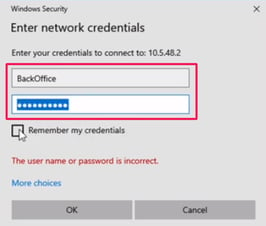Connecting Your Windows PC to a Hughes MNSP
This guide will walk you step-by-step through setting up your Windows PC connection to the Hughes managed network service box for proper LottoShield BackOffice integration.

⚠️ Note: Setting up a BackOffice connection can be tricky depending on your store layout. If this process feels overwhelming, we highly recommend involving an IT technician to assist with BackOffice setup.
What You’ll Need Before Starting
Please gather the following equipment before beginning:
| Item | Notes |
|---|---|
| Windows PC or Laptop | Required. Must have a working Ethernet port or USB slot. |
| USB-to-Ethernet Adapter | Buy Here – Only required if your device lacks an Ethernet port. |
| 5-Port Network Switch | Buy Here – Needed if Port 3 on the Hughes box is already in use. |
| Ethernet Cable (Cat5 or Cat6) | Must be long enough to reach the Hughes box. |
| Access to Hughes Box | You'll be connecting to Port 3 on the back. |
Step 1: Physically Connect Your PC to the Hughes Box
-
Locate the Ethernet port on your PC.
If none exists, connect the USB-to-Ethernet adapter and use it instead. -
Plug one end of the Ethernet cable into your PC (or adapter).
-
Plug the other end of the cable into Port 3 on the Hughes Box.
💡 If Port 3 is already occupied, plug your Network Switch into Port 3. Then, move the existing cable and your PC cable into the switch.
Visual Reference: Back of Hughes box

Step 2: Configure Network Settings on Your PC
Need help? Use LottoShield Live Chat Support anytime.
- Open your Start Menu and type:
Control Panel - Click to open the Control Panel.
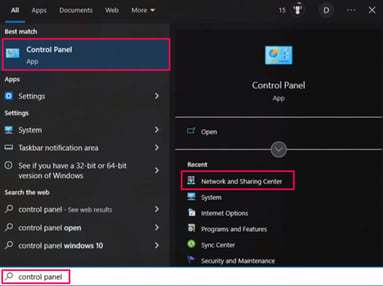
- Navigate to:
Network and Internet > Network and Sharing Center > Change adapter settings - Identify the Hughes connection:
- Temporarily unplug the Ethernet cable from the PC.
- The connection that shows a red ❌ is your Hughes link.
- Plug the cable back in. Right-click the correct connection and choose Properties.
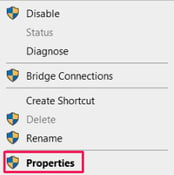
- Select
Internet Protocol Version 4 (TCP/IPv4)and click Properties. - Click Use the following IP address:
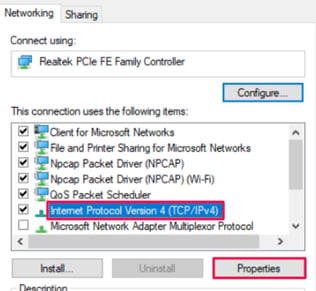
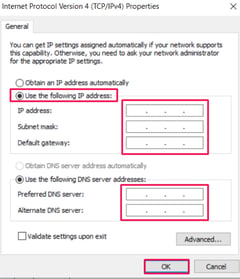
Step 3: Apply the Correct IP Configuration
There are two scenarios depending on your store’s gas brand:
🟩 For Arco AM/PM & BP Sites:
Use the following static IP values:
| Setting | Value |
|---|---|
| IP Address | 192.168.13.X (X can be 2–5) |
| Subnet Mask | 255.255.255.0 |
| Default Gateway | 192.168.13.1 |
| Preferred DNS | 8.8.8.8 |
| Alternate DNS | 8.8.4.4 |
Click OK to save.
🟨 For All Other Sites (Shell, Chevron, etc.):
Call HughesNet Support:
📞 (888) 716-6852
Press Option 4, then 9.
Tell them:
"I'm connecting a Windows PC to Port 3 of the Hughes box and need the BackOffice IP configuration."
Request and write down the following values:
| Ask Hughes For | |
|---|---|
| IP Address | 172.xxx.xx.xxx |
| Subnet Mask | Typically 255.255.255.240 (confirm with Hughes) |
| Default Gateway | 172.xxx.xx.xxx |
| Preferred DNS | 8.8.8.8 |
| Alternate DNS | 8.8.4.4 |
Step 4: (Optional) Add Persistent Route for Dual NICs
Only needed if your PC uses both Ethernet and Wi-Fi (dual NICs).
-
Open your Start Menu, type
cmd, then right-click Command Prompt and choose Run as Administrator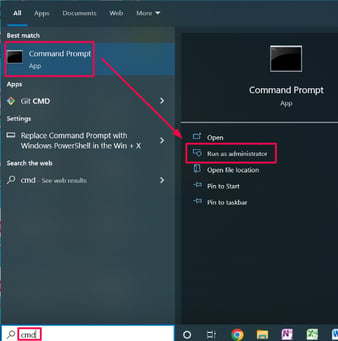
-
Enter the correct command based on your POS system:
For Verifone POS:
route add -p 192.168.31.11 MASK 255.255.255.240 172.xxx.xxx.xxx
For Gilbarco POS:
route add -p 10.5.48.2 MASK 255.255.255.240 172.xxx.xxx.xxx

- Replace
172.xxx.xxx.xxxwith your Hughes Gateway IP. - Press Enter to run the command.
- Return to Change adapter settings.
Right-click the Hughes connection → Disable
Then right-click again → Enable
This refreshes the route.
Step 5: Test Your Register Connection
For Verifone POS:
-
Open any web browser and copy and paste the following into the address bar:
https://192.168.31.11/ConfigClient.html -
You should see the Petroleum C-Store Control Center.
⚠️ You might get a warning: “Your connection is not private.” Click Proceed to continue.
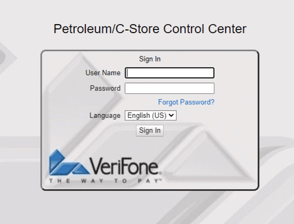
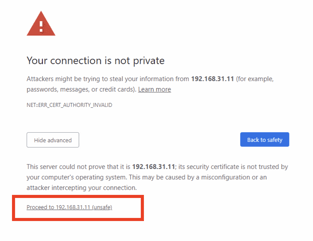
Now it’s time to configure your Verifone POS!
For Gilbarco POS
-
Open File Explorer and paste this into the address bar:
\\10.5.48.2 -
Enter credentials when prompted:
-
Username:
BackOffice -
Password:
BackOffice
-
Capitalization matters—both “B” and “O” must be uppercase.
Click Remember my credentials. When you’re done click OK.
In the new window, you should see the XML Gateway folder.
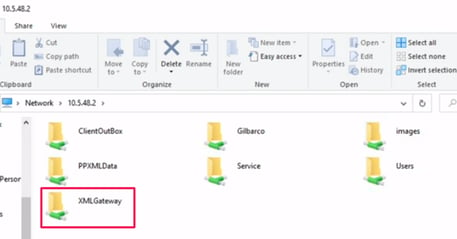
Now it’s time to configure your Gilbarco Passport POS!
If you hit any roadblocks, use LottoShield Live Chat Support—we’re here to help you every step of the way.
![LottoShield Logo -2.png]](https://help.lottoshield.com/hs-fs/hubfs/LottoShield%20Logo%20-2.png?height=50&name=LottoShield%20Logo%20-2.png)

